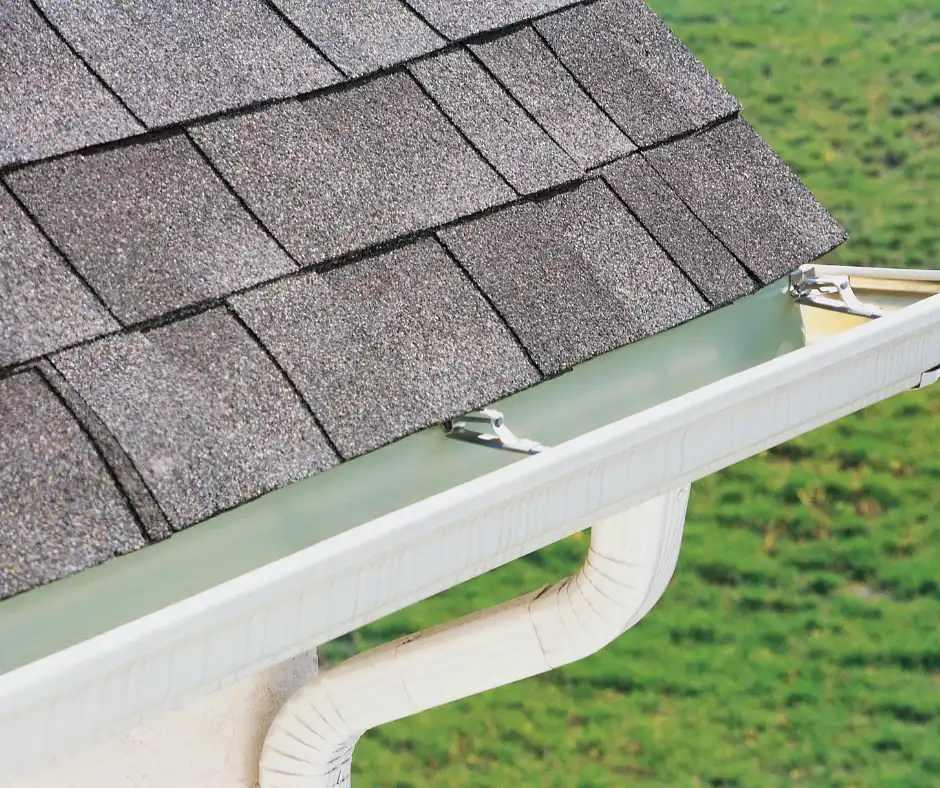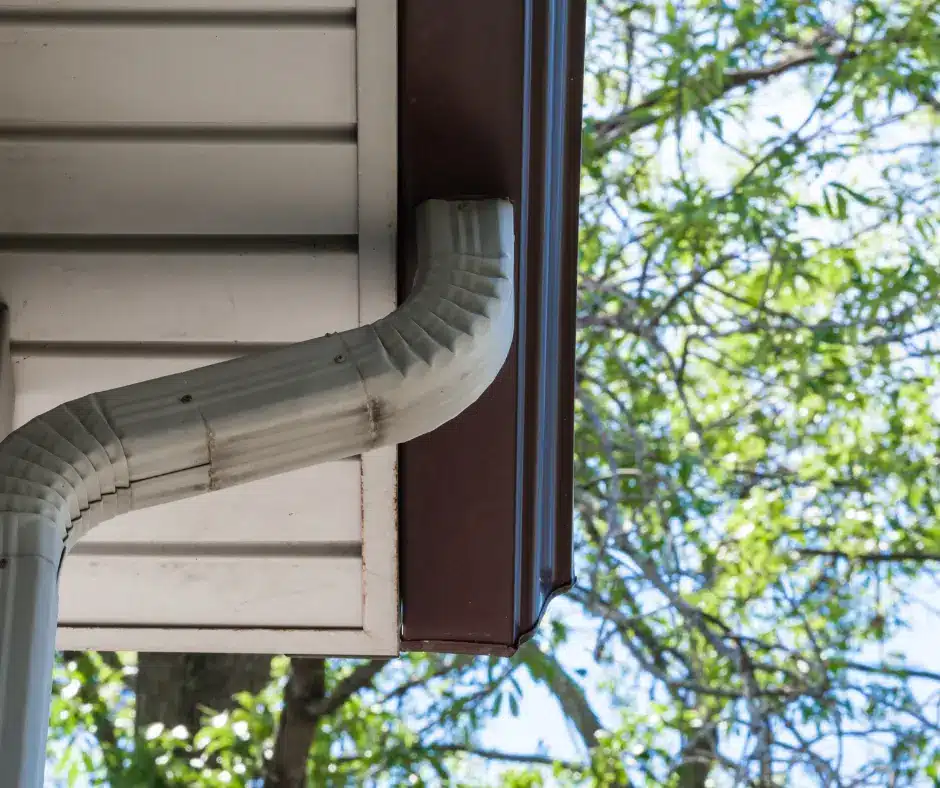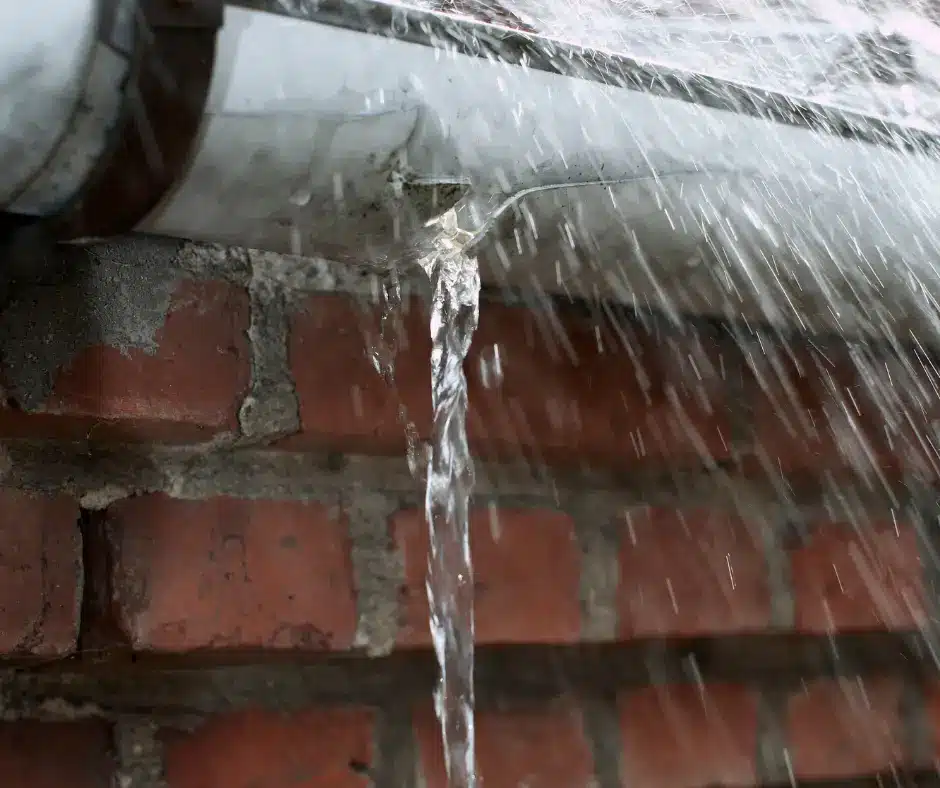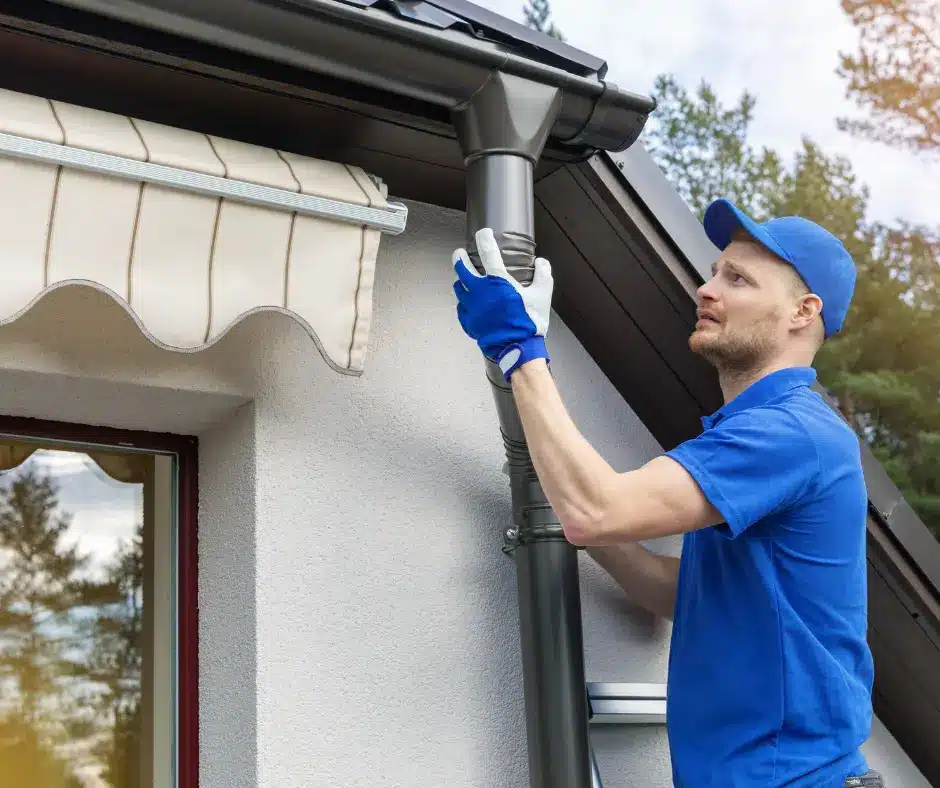Eavestrough Vs Gutter: The Difference And The Best Choice

Looking up at your home’s roofline, you may notice a trough or channel that collects and diverts rainwater. This important fixture prevents water damage, but do you know the difference between an eavestrough vs gutter?
Understanding the nuances helps determine the best system for your Winnipeg residence.
Statistics show improper drainage causes thousands in repair costs annually. As we examine key distinctions like placement and materials, you’ll learn which choice provides optimal rainwater control.
Proper installation combined with routine maintenance keeps your roofline clear and your home dry season after season.
Eavestrough vs Gutter: What’s the Difference?
Eavestroughs and gutters serve the same purpose of channeling rainwater away from a home’s foundation, but there are some key differences to consider when choosing between the two for your Winnipeg home.
Materials
Eavestroughs are typically made of aluminum, vinyl, or steel, while gutters are usually made of aluminum, copper, or galvanized steel. Aluminum and vinyl eavestroughs require little maintenance but dent more easily. Copper gutters are attractive but expensive, while galvanized steel gutters corrode over time. For longevity and affordability, aluminum is often the best choice for Winnipeg’s climate.
Installation
Eavestroughs mount to the fascia board under the edge of the roof, while gutters typically mount directly to the roof edge. Eavestrough installation requires the use of straps and hangers to secure them, while gutters use spikes driven into the roof edge.
Eavestroughs may be easier to install and maintain as they don’t penetrate the roof itself. For roof warranties, eavestroughs are the safer choice.
Shape and Size
Eavestroughs have a rounded or square shape, while gutters are traditionally half-round. Eavestroughs also tend to be larger in size, allowing for increased water flow and less clogging.
The larger shape and size of eavestroughs make them ideal for Winnipeg’s heavy rainfall and winter snowmelt.
In summary, for their durability, lower maintenance, easier and safer installation, as well as increased capacity, eavestroughs are generally the superior choice over traditional gutters for most Winnipeg homes.
When in doubt, consult a reputable roofing company like All Weather Exteriors to determine which option is right for your home.

Pros and Cons of Eavestroughs
Eavestroughs, also known as rain gutters, channel rainwater away from your roofline to prevent water damage to your home’s foundation, siding, and landscape.
According to studies, eavestroughs can reduce foundation cracks by up to 95% and prevent landscape erosion.
Durability
Eavestroughs are typically made of aluminum, galvanized steel, copper, or vinyl. Aluminum and galvanized steel are durable, low-maintenance options. Copper is attractive but requires more maintenance. Vinyl, while budget-friendly, can warp or crack over time.
For Winnipeg’s climate, aluminum or steel eavestroughs are ideal.
Price
The cost of eavestrough installation depends on the material and the size of your roofline. Aluminum eavestroughs start around $3 to $5 per linear foot, steel around $6 to $8 per foot, and copper $20 per foot or more.
Vinyl gutters are the most affordable at $2 to $3 per foot. On average, eavestrough installation in Winnipeg ranges from $1,000 to $3,000 for a typical home.
Efficacy
Properly installed, eavestroughs are extremely effective at controlling rainwater runoff. However, if not properly sloped to drain, eavestroughs can overflow, and trapped debris can clog downspouts, reducing effectiveness.
It’s best to have eavestroughs professionally installed and maintained to maximize performance and lifespan.
Eavestroughs require minimal maintenance but provide significant benefits to your home. For most Winnipeg homeowners, the pros of eavestrough installation far outweigh the costs.
With regular cleaning and inspections, high-quality eavestroughs should last 20-30 years or more, making them a sound long-term investment in your home.

Pros and Cons of Gutters
Gutters are an important part of any home, directing rainwater away from the foundation.
However, they require ongoing maintenance and investment. When deciding between gutters or eavestroughs for your home, consider the following pros and cons:
Reduced Foundation Damage
Gutters divert thousands of liters of water away from your home’s foundation each year, preventing costly damage. According to studies, gutters can reduce foundation cracks by up to 95%. Without gutters, rainwater can pool around the foundation, seeping into the soil and causing structural issues over time.
Lower Risk of Rot and Water Damage
Excess water around the home can lead to water damage, mold growth, and rot in siding, windows, and the roof. Gutters minimize these risks by directing water away from the structure. Research shows homes with gutters have up to 50% less rot and water damage.
Ongoing Maintenance Required
While gutters provide important benefits, they do require regular cleaning and repairs to function properly. Clogged or damaged gutters won’t effectively divert water and can become a hazard.
Most experts recommend inspecting and cleaning gutters at least twice a year to remove leaves and debris.
Gutters may also need occasional repairs or replacement, which can cost between $500 to $3000 depending on the damage.
Initial Installation Cost
If your home does not currently have a gutter system, installation can be expensive. The average cost to install gutters on a single-family home in Canada is $2000 to $10000 or more depending on the size of your roofline and the type of gutters.
This significant upfront cost may be a deterrent for some homeowners.
In summary, while gutters provide substantial benefits to a home, they do require an initial investment and ongoing maintenance. For most homeowners, the pros of reduced foundation damage, water protection, and improved home value far outweigh the cons.
When properly installed and maintained, gutters can be well worth the cost.
Eavestrough vs Gutter: Which Is the Best Choice for Winnipeg Homes?
According to studies, eavestroughs and gutters play an integral role in protecting homes from water damage. They collect and divert rainwater, melted snow, and ice away from building foundations and basements. For Winnipeg homeowners, choosing between eavestroughs or gutters can be challenging given the city’s extreme weather conditions.
Durability
Eavestroughs are generally more durable and weather-resistant than gutters. Made of aluminum or galvanized steel, eavestroughs can withstand Winnipeg’s frigid winters and hot summers. Gutters are typically made of aluminum, copper or vinyl which can warp, dent or crack more easily.
A 2019 study by the Roofing Contractors Association of British Columbia found that aluminum or steel eavestroughs last 2-3 times longer than most gutter materials.
For Winnipeg’s climate, eavestroughs are the superior choice for durability and longevity.
Market Value
While eavestroughs are more durable, they tend to be slightly more expensive than gutters. The average cost to install eavestroughs on a typical Winnipeg home is $10 to $15 per linear foot, amounting to $1,500 to $3,500 for a 1,500-square-foot home.
Gutters typically range from $3 to $10 per linear foot or $900 to $2,500 for the same size home. However, given eavestroughs’ longer lifespan, the additional upfront cost can be offset by fewer repairs and replacements over time. For budget-conscious homeowners, either option can work well if properly maintained.
Proper Installation
Eavestroughs generally require more complex installation since they must be securely attached to the home, ideally with a slope for proper drainage. Gutters are often easier to install as sections can simply be hung from the edge of the roof. While do-it-yourself installation is possible for both, it is best left to a professional to ensure proper slope, sealing, and downpipe attachment according to local building codes.
In summary, while gutters can work for some Winnipeg homes, eavestroughs are the superior choice, given their durability, weather resistance, and long-term cost-effectiveness. For the extreme weather conditions in Winnipeg, eavestroughs provide the most comprehensive protection for homes and foundations.

FAQs: Understanding the Difference Between Eavestroughs and Gutters
Eavestroughs and gutters may seem interchangeable, but there are key differences to understand before choosing one for your home.
Studies show eavestroughs, also known as rain gutters, can help prevent water damage to homes, foundations, and landscaping, leading to savings of up to 15% on home insurance premiums.
What is an eavestrough?
Eavestroughs are trough-like channels that run along the edge of the roof to collect rainwater and divert it away from the house. They are typically semi-circular or box-shaped and made of aluminum, steel, copper, or vinyl.
Eavestroughs require downspouts to transport water from the roof edge to the ground. They provide comprehensive coverage for the entire roof edge and the highest capacity. Eavestroughs are the most popular choice for residential roof drainage.
What is a gutter?
Gutters are similar to eavestroughs but are open-topped, U-shaped channels, usually made of the same materials. They also require downspouts to direct water away from the foundation. Gutters typically provide slightly less coverage and capacity than a similarly sized eavestrough. Gutters can be a good choice if cost is a concern, as they tend to be slightly more affordable than eavestroughs.
Which should I choose: eavestrough or gutter?
For most homes, eavestroughs are the best option. They provide the most comprehensive coverage and the highest capacity to handle the heavy rainfall common in many areas.
Eavestroughs also tend to last longer, up to 50 years compared to 25-30 years for gutters. While eavestroughs have a higher upfront cost, their durability and performance lead to lower long-term costs. If budget is a concern, you can save on installation fees by choosing a lower-priced material like aluminum.
In the end, both eavestroughs and gutters can work well for home drainage. However, for worry-free performance and maximum protection, eavestroughs are worth the investment. By understanding the differences, you can choose the best solution for your home and budget.
Eavestrough is the best choice for your Winnipeg Home
You now understand the key differences between eavestroughs and gutters, and why eavestroughs are the best choice for most Winnipeg homes. With their durability, aesthetic appeal, and effectiveness at diverting rainwater, eavestroughs protect your foundation and prevent costly water damage.
Though more expensive upfront, their longevity makes them a smart investment. As you make this important decision for your home, remember that proper installation is key. Take the time to find an experienced professional who will get the job done right.
With the right eavestrough system in place, you can look forward to many years of dry basements and water-free exteriors.
All Weather Exteriors got your back!
Now that you understand the importance of a properly functioning eavestrough system, choosing the right Winnipeg roofing company for installation or repair is key. All Weather Exteriors, a trusted name in Winnipeg for over fifteen years, offers exceptional service and expertise for all your roofing and exterior needs.
We specialize in eavestrough installation, repair, and cleaning, ensuring your home is protected from water damage year-round. We also provide a wide range of roofing services, from repairs to full replacements, for complete peace of mind.
Contact All Weather Exteriors today for a free quote and experience the difference in quality workmanship and exceptional customer service. Let them keep your Winnipeg home safe from the elements, all seasons long.
Editor’s Note: This post was originally published on January 27, 2023. The last update was made on May 10, 2024, to reflect new information and insights.
Leave a Reply
You must be logged in to post a comment.

One Comment